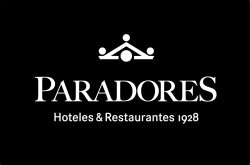Description
Parador de La Granja - 18th century buildings within grounds of the Royal Palace (4*)
Set within sumptuous 18th century buildings, the Parador de La Granja de San Ildefonso distinguishes itself through its remarkable history. King Juan Carlos of Spain officially opened the Parador in June 2007 and it occupies a palace which had been designed for King Felipe V and used as a summer residence for many successive kings throughout several centuries.
With an unmistakable royal atmosphere, La Granjas’ Parador offers all of the modern amenities expected of a 4-star contemporary hotel. Its 127 bedrooms are located within the original ‘Casa de los Infantes’ – the Princes’ house - built by Carlos III. The former headquarters of the King’s bodyguards are now home to a conventions and business centre supported by state-of-the-art technology.
Marble interiors contribute to the bright and airy atmosphere of the Parador, and locally-made glass chandeliers give the entrance a delicate and sophisticated air. In addition, the spa and its facilities such as the heated indoor swimming pool, revitalizing shower and ice fountain will make your stay exceptionally relaxing.
With its large dining area and terrace, the restaurant of the Parador fulfils every guest’s wishes. The high standard of cuisine presented at the Puerta de la Reina restaurant incorporates traditional and contemporary dishes. You can also sample traditional products prepared with special care, such as the broad beans of La Granja or the renowned Valsain raspberries accompanied by the Paradors’ exemplary wine selection.
Keytel Tips
Treat yourself to one of the fabulous treatments offered at the Parador’s Spa.
Enjoy the beautiful architecture of the hotel by sitting in the stunning atrium, the best viewpoint to observe the arches at the heart of the Parador.



Andrea B
March 7, 2024 at 3:30 pmThe superior room at La Granja was just like a suite and the Glass Factory just by the Parador, a working museum was fantastic too.